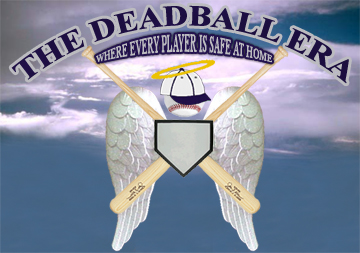|
Former
all-star carried legacy of black baseball
Byron Johnson | 1911-2005
By Robert Sanchez
DenverPost.com
Byron Johnson's
hands were like polished oak. They were solid and smooth - his thin
fingers and knotty knuckles stretched to nails so beautifully manicured
they resembled the inside of an oyster's shell.
For much of his youth, he held a baseball in those hands, the white
rawhide a gleaming contrast against his mocha skin. He'd flip the ball
across the infield and smile at the sizzle then pop that it made in
the first baseman's glove.
Decades later, when those hands began to crease and shake, visitors
would ask to hold them. They marveled at the size and softness, then
listened to the grayed man as he talked baseball the rest of the afternoon.
Johnson, the oldest Negro Leagues player in Colorado, died Saturday
from prostate cancer. The shortstop was 94.
A memorial service is scheduled for 1 p.m. Wednesday at Park Hill United
Methodist Church in Denver. He will be buried in Fort Logan National
Cemetery.
Though Johnson is best- known for his exploits as part of the famed
Kansas City Monarchs baseball team and later as an infielder for baseball
legend Satchel Paige's traveling team, the recognition came long after
he played in his final game in 1940, joined the Army during World War
II and raised a family in Arkansas and Denver.
He was a skinny young man who excelled at football and baseball at Dunbar
High School in Little Rock, Ark., and married his teenage sweetheart.
He was a survivor, his family and friends said, having lived through
segregation, leaving baseball in the prime of his career, being drafted
into war and carrying on after the death of his 14-year-old son, Joseph
Byron, from lupus.
"Dad was in a play in high school - had the lead role - and he
forgot his lines," Johnson's daughter, Jacquelyn Benton, said.
"He said he inched closer to the curtain and someone read the lines,
and he remembered it all right there. He said he came back strong.
"That's how he was his whole life."
He signed his first professional contract with the Monarchs in 1937.
Because the white major leagues had yet to be integrated, black players
made their names in segregated leagues, traveling by bus, sometimes
playing three games a day.
Johnson stayed with the Monarchs until 1938, when he was selected to
a Negro Leagues all-star game.
Johnson - nicknamed "Mex" because a hat he wore as a child
looked like a sombrero - joined Paige's traveling team in 1939 and stayed
through 1940.
He quit baseball that year, weary from the travel and being away from
his family and believing that a shot at the majors would never come.
"He never complained about how hard it was being a black baseball
player, and he was never bitter that he didn't get to play" in
the majors, said Jay Sanford, a baseball researcher who knew Johnson
for 20 years. "Byron was just grateful that he got to play the
game he loved."
Johnson was drafted into the Army in 1941 and served in Europe until
1945.
"He was a competitor. He was going to outhit you, outfield you,
anything he had to do to be the best," said Buck O'Neil, 93, a
former player and coach who is chairman of the Negro Leagues Baseball
Museum in Kansas City, Mo. He befriended Johnson in 1938 when they played
for the Monarchs.
Even after their playing days, O'Neil would visit Johnson, and the two
played golf. The loser always bought lunch.
And later, as Johnson recovered from the death of his wife, Christine,
and survived bouts with illnesses and a broken hip, the two former ballplayers
remained close.
"With Mex, it's a relief that he won't hurt anymore," O'Neil
said. "Don't cry for Mex. Mex had a great life."
Johnson moved his family to Denver in 1958 at the height of racial tension
in the South. His niece Carlotta Walls received death threats when she
helped integrate Little Rock Central High School as part of the famous
Little Rock Nine.
He worked as a postal clerk in Denver before his retirement in the 1970s,
and his wife taught elementary school.
At the urging of his family, Johnson traveled with Sanford, giving speeches
about black baseball. A book on his life, "Legacy of a Monarch,"
was released earlier this year.
Back in 1992, an artist asked to make a cast of his hands. The hands,
gripping a bat, are now part of a traveling museum on the Negro Leagues.
"Byron was a great ballplayer, but he was a greater person,"
O'Neil said. "I never shall forget him."
Johnson is survived by his daughter, two grandchildren and four great-grandchildren.
|





